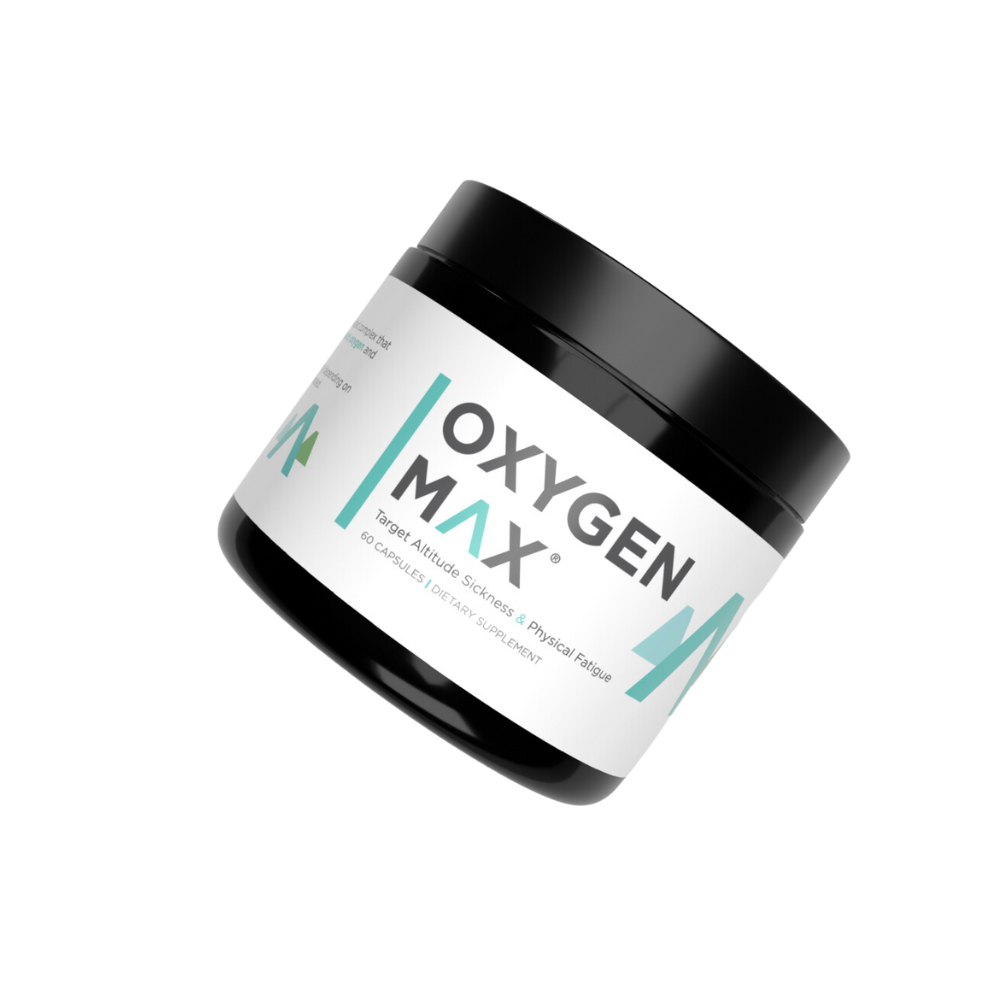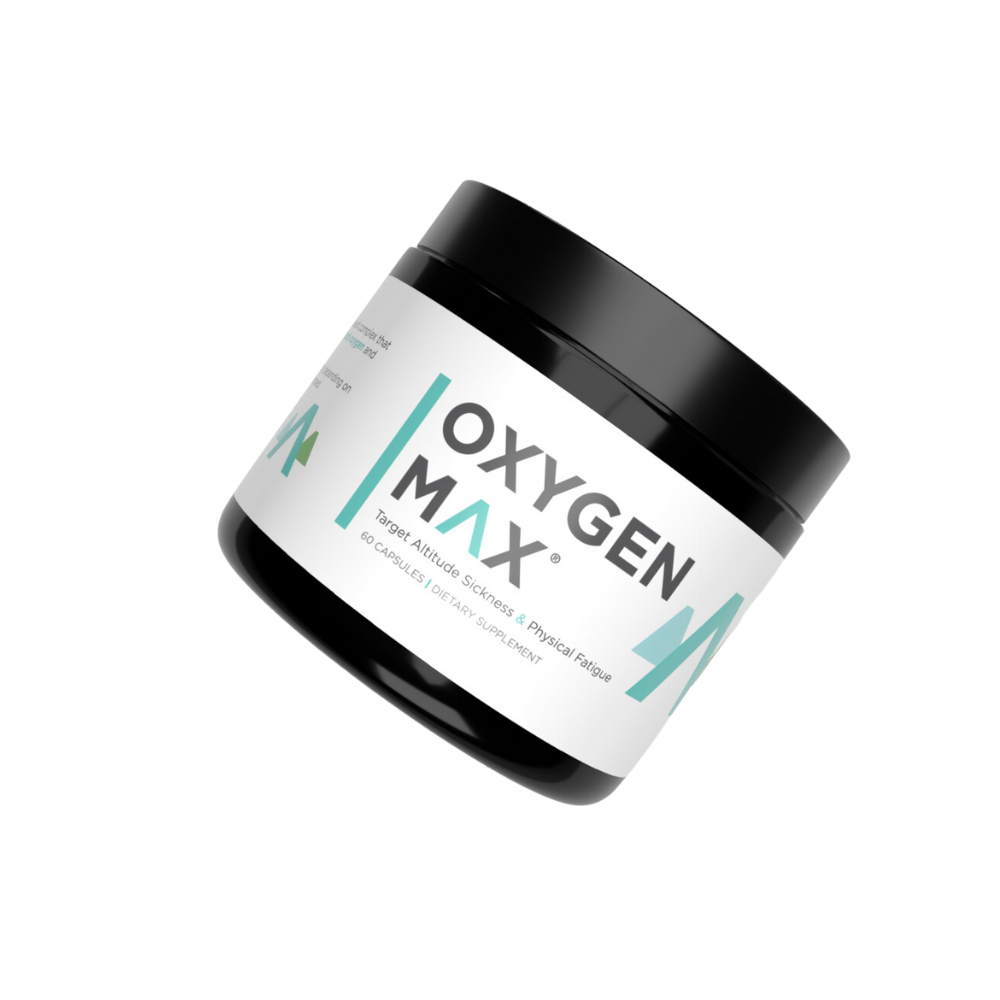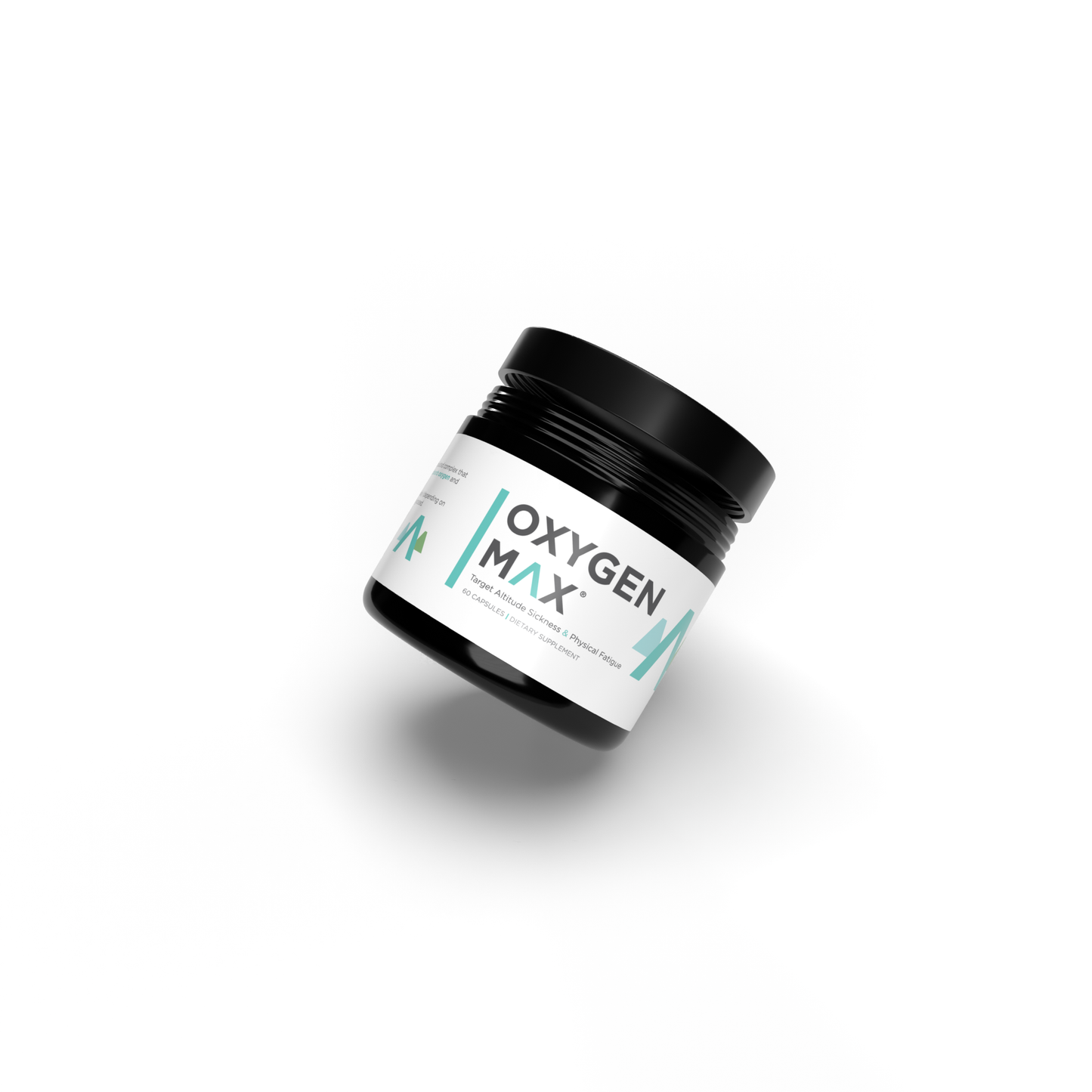Imagine being at the starting line of a marathon, adrenaline pumping, heart racing. The gun goes off, and suddenly, your body becomes a finely-tuned machine, converting oxygen into energy with every stride. That's the power of O2! It's the unsung hero of athletic performance, silently fueling our muscles and pushing us to new heights.
Understanding how oxygen works in our body isn't just for science geeks. It's the secret weapon that could take your athletic game from "meh" to "holy moly!" Whether you're a weekend warrior or a pro athlete, grasping the ins and outs of oxygen utilization could be the key to unlocking your full potential.
So, why should you care about this invisible performance enhancer? Because knowledge is power, my friends. And in this case, it's the power to run faster, lift heavier, and recover quicker. Let's break it down and see how this vital element can breathe new life into your fitness journey.
1. The Science of Oxygen and Muscle Function
How Oxygen Fuels Muscles: The Cellular Power Plant
Alright, let's get our nerd glasses on for a sec. Ever wondered what's happening inside your muscles when you're crushing that HIIT workout? It's like a microscopic power plant in there!
Here's the lowdown:
- You breathe in oxygen (duh, right?)
- That oxygen hitches a ride on your red blood cells
- It travels to your muscle cells
- Inside the cell, little organelles called mitochondria (think of them as tiny energy factories) use that oxygen to break down glucose
- This process, called aerobic respiration, produces ATP – the energy currency of your cells
Boom! You've got power to push through that last set of burpees. It's like magic, but it's science!
The Oxygen Delivery Express: From Lungs to Muscles
Now, let's talk about how oxygen gets from point A (the air) to point B (your biceps). It's not just a simple journey – it's more like a complex subway system with multiple transfers.
- Inhalation: You take a deep breath, filling your lungs with air.
- Alveoli Exchange: In your lungs, tiny air sacs called alveoli swap oxygen from the air with carbon dioxide from your blood.
- Bloodstream Highway: Oxygen-rich blood leaves your lungs and heads to your heart.
- Heart Pump: Your heart gives that oxygenated blood a powerful squeeze, sending it out to your body.
- Capillary Network: Tiny blood vessels called capillaries deliver the oxygen right to your muscle cells.
It's an incredible system, and when it's working efficiently, you're a lean, mean, oxygen-utilizing machine!
Key Players in the Oxygen Game
Let's meet the MVPs of oxygen utilization:
- Hemoglobin: This protein in your red blood cells is like a oxygen taxi, carrying O2 molecules through your bloodstream.
- VO2 Max: This is the maximum rate at which your body can use oxygen during exercise. Think of it as your oxygen-processing limit.
- Mitochondria: These cellular powerhouses convert oxygen and nutrients into energy. The more efficient they are, the better your performance.
Understanding these key factors is crucial for anyone looking to optimize their athletic performance. It's not just about how much you can lift or how fast you can run – it's about how efficiently your body can use the oxygen you're breathing in.
2. Oxygen and Endurance Performance
Endurance Athletes: The Oxygen Addicts
If you've ever watched a marathon or a Tour de France stage, you've seen the ultimate oxygen utilization machines in action. Endurance athletes are like the gas-sipping hybrids of the sports world – they're all about getting the most mileage out of every breath. Their bodies are finely tuned to use oxygen as efficiently as possible, allowing them to keep going when others would be gasping for air.
For these athletes, oxygen isn't just important – it's everything. Here's why:
- Sustained Energy Production: Long-duration activities rely heavily on aerobic metabolism, which requires a constant supply of oxygen.
- Fatigue Prevention: Efficient oxygen use helps delay the onset of fatigue by reducing the buildup of lactic acid.
- Recovery During Activity: Even during exercise, better oxygen utilization allows for quicker recovery between high-intensity bursts.
VO2 Max: The Endurance Athlete's Holy Grail
Remember VO2 max from earlier? For endurance athletes, this number is like their athletic credit score – the higher, the better. But what exactly is it?
VO2 max is the maximum rate at which your body can consume oxygen during intense exercise. It's measured in milliliters of oxygen per kilogram of body weight per minute (ml/kg/min). The higher your VO2 max, the more oxygen your body can use, and theoretically, the better your endurance performance.
Fun fact: Some elite endurance athletes have VO2 max values nearly double that of an average person. Talk about breathing easy!
Training to Become an Oxygen-Utilizing Machine
Want to boost your oxygen efficiency? Here are some tried-and-true techniques:
- Interval Training: Alternating between high-intensity bursts and recovery periods can increase your VO2 max and improve oxygen utilization.
- Long Slow Distance (LSD) Training: Extended, lower-intensity workouts help your body become more efficient at using oxygen over time.
- Altitude Training: Exercising in low-oxygen environments forces your body to adapt and use oxygen more efficiently.
Pro Tip: Check out our guide on how to maximize oxygen levels for superior energy for more in-depth strategies!
3. Oxygen's Impact on Strength and Power Athletes
Aerobic vs. Anaerobic: A Tale of Two Energy Systems
Now, you might be thinking, "Wait a minute, I'm a powerlifter. Do I really need to care about oxygen?" The answer is a resounding yes! While it's true that strength and power athletes rely more on anaerobic (without oxygen) energy systems for their explosive movements, oxygen still plays a crucial role.
Let's break it down:
- Anaerobic Exercise: Think short bursts of intense activity, like a max deadlift or a 100-meter sprint. These rely primarily on stored energy sources that don't require oxygen.
- Aerobic Exercise: This is your longer-duration stuff, where oxygen is key for sustained energy production.
Here's the kicker: even strength athletes need good aerobic fitness. Why? Because it helps with:
- Recovery between sets: Better oxygen utilization means quicker recovery times.
- Overall workout endurance: You'll be able to maintain intensity throughout your training session.
- Improved cardiovascular health: Because, you know, your heart is kind of important.
Oxygen: The Unsung Hero of Recovery
After you've crushed that heavy lifting session, oxygen becomes your best friend. Here's how it helps with recovery:
- Muscle Repair: Oxygen is crucial for the cellular processes that repair and rebuild muscle tissue.
- Waste Removal: It helps flush out metabolic waste products like lactic acid.
- Energy Restoration: Oxygen aids in replenishing energy stores depleted during intense exercise.
Hypoxia Training: When Less Oxygen Means More Gains
Here's a paradox for you: sometimes, training with less oxygen can actually improve your strength and endurance. Welcome to the world of hypoxia training!
Hypoxia training involves exercising in low-oxygen environments, either at high altitudes or using special equipment that limits oxygen intake. This type of training can:
- Increase muscle strength and size
- Improve anaerobic endurance
- Enhance overall cardiovascular fitness
But a word of caution: hypoxia training is intense and should be approached carefully, preferably under professional guidance.
4. Oxygen Deficiency and Its Effects
When the Tank Runs Low:Symptoms of Low Oxygen Levels in Athletes
Imagine you're in the middle of a grueling workout, and suddenly you feel like you're running on fumes. That might be your body telling you it's not getting enough oxygen. Here are some red flags to watch out for:
- Fatigue: Not just your run-of-the-mill tiredness, but a deep, overwhelming exhaustion.
- Dizziness: The room starts spinning, and not because of your killer dance moves.
- Decreased Performance: Suddenly, that weight you could lift easily feels like it's made of lead.
- Shortness of Breath: You're panting like a dog in summer, even during light exercise.
- Mental Fog: Your brain feels like it's wrapped in cotton wool.
If you experience these symptoms regularly during exercise, it might be time to chat with a healthcare professional. Don't ignore your body's SOS signals!
Altitude: Where the Air is Thin and the Gains are Big
Ever wondered why so many elite athletes flock to high-altitude training camps? It's all about that thin air, baby! At higher altitudes, there's less oxygen in the air, which presents both challenges and opportunities for athletes.
The Challenges:
- Initially, performance may decrease due to less available oxygen.
- You might experience altitude sickness (headaches, nausea, fatigue).
The Opportunities:
- Your body adapts by producing more red blood cells to carry oxygen.
- This adaptation can lead to improved performance when you return to lower altitudes.
It's like the old saying goes: "Train high, compete low." But remember, altitude training isn't a walk in the park (even if you're literally walking in a high-altitude park). It requires careful planning and monitoring.
When Oxygen Checks Out: The Performance Nosedive
Oxygen deprivation is no joke. When your muscles don't get enough O2, things can go south pretty quickly:
- Decreased Power Output: Your muscles can't generate as much force.
- Reduced Endurance: You'll hit the wall sooner than usual.
- Slower Recovery: Between sets or intervals, you'll need more time to bounce back.
- Increased Risk of Injury: Fatigue can lead to poor form and potential injuries.
The takeaway? Respect the O2, folks. It's the silent MVP of your workout.
5. Supplementing Oxygen: Strategies for Athletes
Oxygen-Enriched Air: Breathing in the Boost
Imagine if you could supercharge the air you breathe during training. Well, with oxygen-enriched air, you can! This technique involves breathing air with a higher concentration of oxygen than normal atmospheric air.
Benefits:
- Improved endurance
- Faster recovery between high-intensity intervals
- Potential for higher intensity workouts
How it works: Athletes use special equipment to breathe in oxygen-enriched air during training sessions. It's like giving your muscles a turbo boost of their favorite fuel!
Portable Oxygen: Breath of Fresh Air on the Go
Picture this: You're at the top of your game, pushing your limits, and you need a quick oxygen boost. Enter portable oxygen canisters – the new trend that's breathing life into high-intensity sports.
These nifty devices allow athletes to take a few puffs of pure oxygen during breaks in competition or training. It's like a pit stop for your lungs!
Popular in sports like:
- American Football
- Boxing
- Mountain Climbing
Remember, though, this isn't something to try without proper guidance. Always consult with a sports medicine professional before incorporating supplemental oxygen into your routine.
Hyperbaric Oxygen Therapy (HBOT): The Pressure's On
Now, let's talk about a treatment that's gaining traction in the world of athletic recovery: Hyperbaric Oxygen Therapy. It sounds like something out of a sci-fi movie, but it's very real and potentially very effective.
What is it? HBOT involves breathing pure oxygen in a pressurized chamber. This increases the amount of oxygen your blood can carry, potentially speeding up healing and recovery.
Potential Benefits:
- Faster recovery from injuries
- Reduced inflammation
- Improved healing of wounds and soft tissue injuries
While more research is needed, many pro athletes swear by HBOT for recovery. It's like giving your body a super-charged healing environment.
6. Nutritional Support for Oxygen Efficiency
Iron: The Oxygen Carrier's Best Friend
Let's talk about iron, and no, we're not discussing your gym equipment. This essential mineral plays a crucial role in oxygen transport. Here's why it's a big deal:
- Iron is a key component of hemoglobin, the protein in red blood cells that carries oxygen.
- Without enough iron, your body can't produce enough healthy oxygen-carrying red blood cells.
- This can lead to iron-deficiency anemia, which is like trying to run a marathon with flat tires.
Athletes, especially endurance athletes and female athletes, are at higher risk of iron deficiency. So, how can you ensure you're getting enough?
Iron-rich foods:
- Lean meats
- Leafy greens (spinach, kale)
- Legumes
- Fortified cereals
Pro tip: Pair iron-rich foods with vitamin C sources to boost absorption. Think spinach salad with bell peppers!
Eating Your Way to Better Oxygen Use
Your diet can play a significant role in how efficiently your body uses oxygen. Here are some nutritional strategies to boost your oxygen game:
- Beetroot Juice: Rich in nitrates, which can improve blood flow and oxygen delivery to muscles.
- Antioxidant-Rich Foods: Berries, dark chocolate, and green tea can help combat exercise-induced oxidative stress.
- Omega-3 Fatty Acids: Found in fatty fish, these can help reduce inflammation and improve lung function.
- Magnesium: This mineral supports energy production and muscle function. Find it in nuts, seeds, and whole grains.
Remember, food is fuel. Choose wisely, and your body will thank you with improved performance!
Hydration: The Unsung Hero of Oxygen Transport
We've all heard "stay hydrated" a million times, but do you know why it's so crucial for oxygen delivery? Let's break it down:
- Proper hydration maintains blood volume, which is essential for efficient oxygen transport.
- Dehydration can lead to thicker blood, making it harder for your heart to pump oxygen-rich blood to your muscles.
- Even mild dehydration can impact your performance and oxygen utilization.
Hydration tips for athletes:
- Drink water consistently throughout the day, not just during workouts.
- Monitor your urine color – aim for pale yellow.
- For longer workouts, consider electrolyte-enhanced drinks to replace what you lose through sweat.
Remember, if you're thirsty, you're already dehydrated. Stay ahead of the game!
7. Case Studies and Real-World Applications
Oxygen Efficiency All-Stars: Learning from the Best
Let's take a moment to appreciate some athletes who've taken oxygen utilization to the next level:
-
Eliud Kipchoge: This marathon legend broke the 2-hour barrier, partly thanks to his incredible oxygen efficiency. His VO2 max is off the charts!
-
Michael Phelps: The swimming GOAT's lung capacity and oxygen utilization allowed him to dominate in the pool. Fun fact: his lung capacity is about twice that of the average person!
-
Marit Bjørgen: This cross-country skiing champion's success is attributed to her exceptional ability to use oxygen, even in grueling endurance events.
These athletes show us what's possible when you optimize your body's oxygen use. It's not just about natural talent – it's about smart training and understanding your body's needs.
Oxygen Therapy Success Stories
Supplemental oxygen isn't just for medical emergencies. Many elite athletes are using various forms of oxygen therapy to boost their performance and recovery:
- NFL Players: Many football teams now have oxygen tanks on the sidelines for players to use between plays.
- Tour de France Cyclists: Some teams use hyperbaric chambers for recovery during the grueling multi-stage race.
- MMA Fighters: Fighters often use oxygen supplementation between rounds to improve recovery and maintain performance.
One notable example is Floyd Mayweather Jr., who reportedly used hyperbaric oxygen therapy as part of his recovery routine throughout his boxing career.
While the science is still catching up, many athletes swear by these methods. It just goes to show that sometimes, a breath of fresh air (or pure oxygen) can make all the difference!
Conclusion
From the cellular level to real-world applications, we've seen just how crucial oxygen is for athletic performance.
Whether you're a weekend warrior or a pro athlete, understanding and optimizing your body's use of oxygen can take your performance to new heights. It's not just about breathing, it's about breathing with purpose.
The next time you're huffing and puffing through a workout, remember the incredible journey that oxygen is taking through your body. Appreciate the complexity of the system and the ways you can enhance it. Your muscles (and your personal records) will thank you!
Ready to put this knowledge into action? Start by focusing on your breathing during your next workout. Pay attention to how it feels, and experiment with different breathing techniques. And hey, why not check out our guide on how to maximize oxygen levels for superior energy for even more tips?
Remember, every breath you take is an opportunity to fuel your performance. So breathe deep, train smart, and watch your athletic prowess soar to new oxygen-rich heights!
Additional Resources
Want to dive deeper into the world of oxygen and athletic performance? Check out these fantastic resources:
- "Breath: The New Science of a Lost Art" by James Nestor
- "Endure: Mind, Body, and the Curiously Elastic Limits of Human Performance" by Alex Hutchinson
- American College of Sports Medicine (ACSM) website
- TED Talk: "The amazing effect of exercise on your brain" by Wendy Suzuki
- Podcast: "The Drive" by Peter Attia, MD




